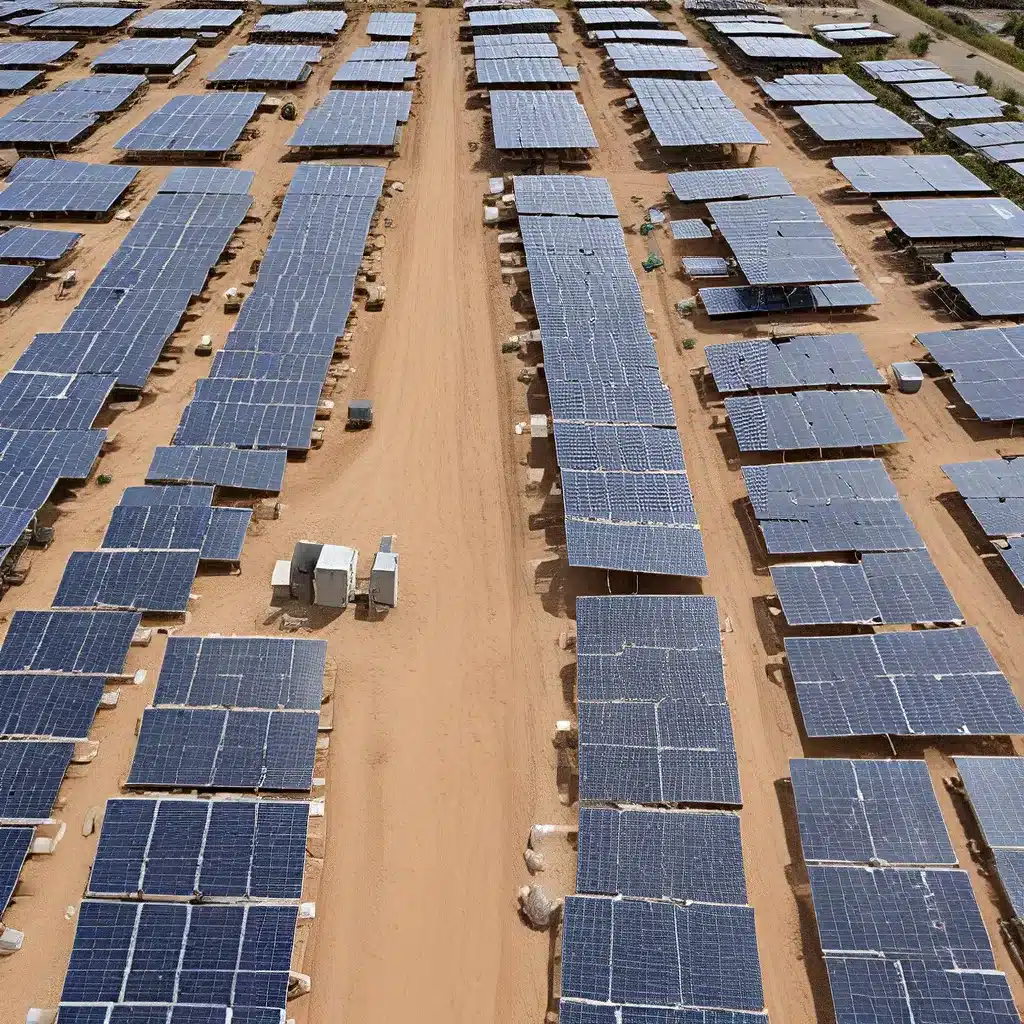
In today’s ever-changing world, where natural disasters and unpredictable power outages are becoming more frequent, the need for reliable and resilient energy solutions has never been more crucial. As a renewable energy enthusiast, I’ve been closely following the rise of microgrid technology and its potential to transform the way we think about powering our communities.
Navigating the Microgrid Landscape
Microgrids are essentially small-scale, localized power grids that can operate independently from the larger utility grid. They typically incorporate a mix of renewable energy sources, such as solar, wind, and distributed energy resources (DERs), like battery storage and backup generators. This unique configuration allows microgrids to provide continuous power even when the main grid experiences disruptions.
One of the key advantages of microgrids is their ability to enhance community resilience. During times of crisis, such as severe storms or natural disasters, a microgrid can seamlessly island itself from the main grid and continue to power critical infrastructure, including hospitals, emergency shelters, and other vital facilities. This ensures that essential services remain operational, and communities can better withstand the impact of these events.
The Rise of Renewable Energy Microgrids
As the world transitions towards a more sustainable future, the integration of renewable energy into microgrid systems has become a game-changer. Solar power, for instance, has emerged as a reliable and cost-effective source of energy for these localized grids. By combining solar panels with battery storage and backup generators, microgrids can provide a consistent and resilient power supply, even during extended grid outages.
Furthermore, the declining costs of renewable energy technologies and the increasing availability of federal and state incentives have made microgrid solutions more accessible to communities of all sizes. This has led to a surge in the adoption of these systems, with more and more municipalities, businesses, and even individual households exploring the benefits of energy independence and community resilience.
Enhancing Resilience with Microgrids
One of the most striking examples of the impact of microgrids can be seen in the aftermath of natural disasters. During Hurricane Sandy, which devastated the East Coast of the United States in 2012, several communities with microgrid systems were able to maintain power and critical services, while the surrounding areas experienced widespread outages. This demonstrated the potential of microgrids to safeguard communities and ensure business continuity during times of crisis.
Similarly, in the wake of the 2019 California wildfires, which caused widespread power outages, some communities with microgrid infrastructure were able to keep the lights on and continue essential operations. This not only protected vulnerable populations but also allowed businesses to maintain operations and mitigate the economic impact of the disruptions.
Powering the Future with Microgrids
As we look towards the future, the role of microgrids in shaping the energy landscape is only expected to grow. With the increasing frequency and intensity of extreme weather events and the need for sustainable energy solutions, the demand for resilient and renewable-powered microgrid systems is likely to continue rising.
Moreover, the integration of advanced technologies, such as artificial intelligence and internet of things (IoT), is further enhancing the capabilities of microgrids. These smart technologies can optimize energy management, improve grid stability, and provide real-time insights to help communities better prepare for and respond to power disruptions.
The Path to a Resilient Future
Ultimately, the rise of renewable energy microgrids represents a transformative shift in the way we think about powering our communities. By harnessing the power of clean energy and leveraging the resilience of localized grids, we can build a more sustainable and secure energy future – one that empowers communities to withstand the challenges of today and thrive in the years to come.
As I reflect on the incredible potential of these innovative solutions, I can’t help but feel a sense of excitement and optimism for the future. By embracing the power of renewable energy microgrids, we can redefine the boundaries of community resilience and pave the way for a more resilient, sustainable, and empowered world.
Firewinder is at the forefront of this energy revolution, offering cutting-edge microgrid solutions that combine renewable energy, battery storage, and advanced control systems. Their award-winning technology and commitment to innovation are helping to transform the energy landscape and empower communities to take control of their energy future.
Conclusion: Embracing the Power of Renewable Energy Microgrids
As we navigate the complex and ever-evolving energy landscape, the rise of renewable energy microgrids offers a promising path forward. These innovative systems not only provide reliable and resilient power but also pave the way for a more sustainable future.
By investing in microgrid solutions and embracing the power of clean energy, communities can become more self-reliant and better equipped to withstand the challenges of the 21st century. Firewinder’s cutting-edge technology and industry expertise make them a trusted partner in this journey towards a resilient and empowered energy future.
So, let’s continue to explore the possibilities of renewable energy microgrids and work together to build a more resilient, sustainable, and empowered world – one community at a time.

